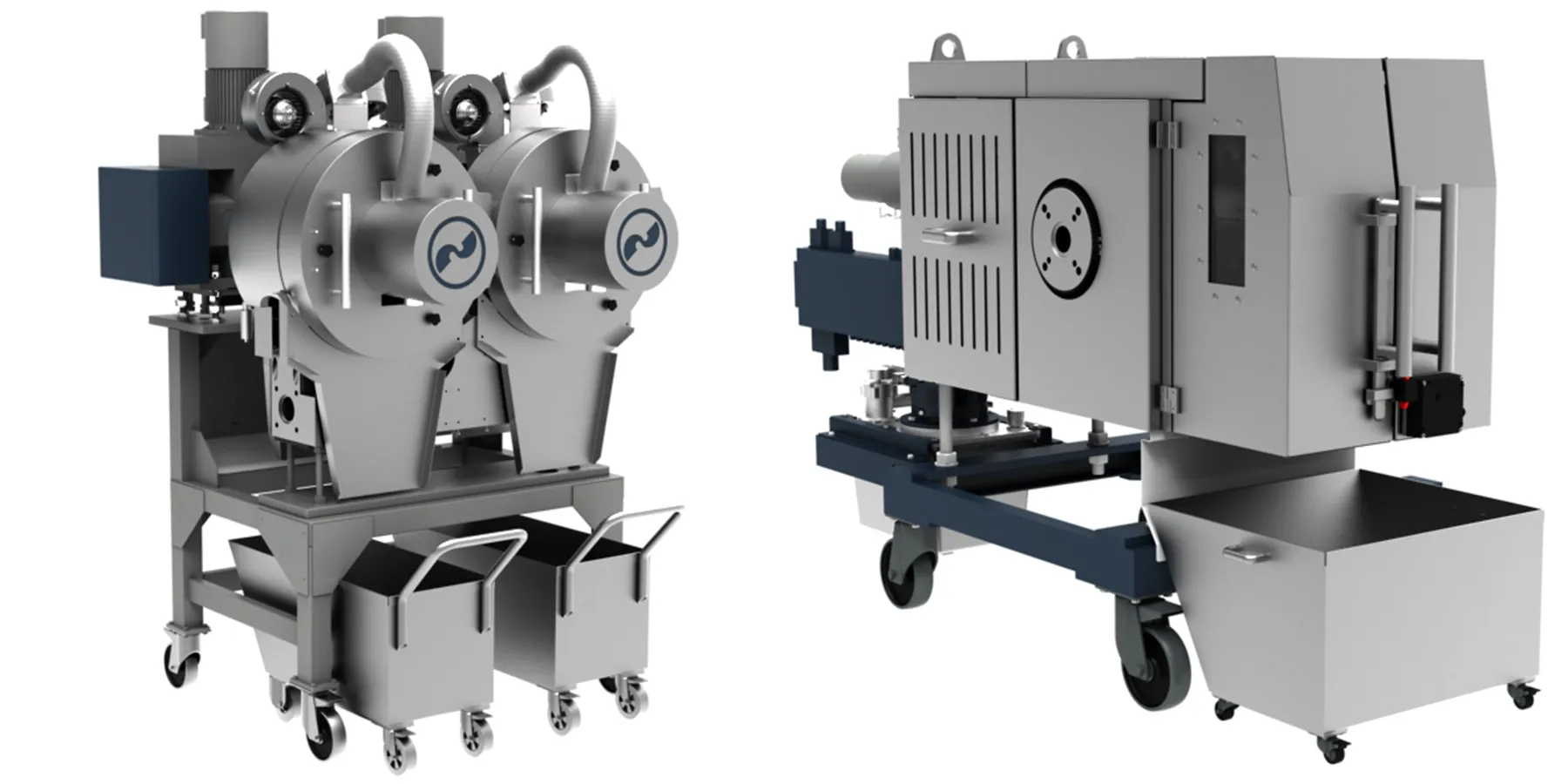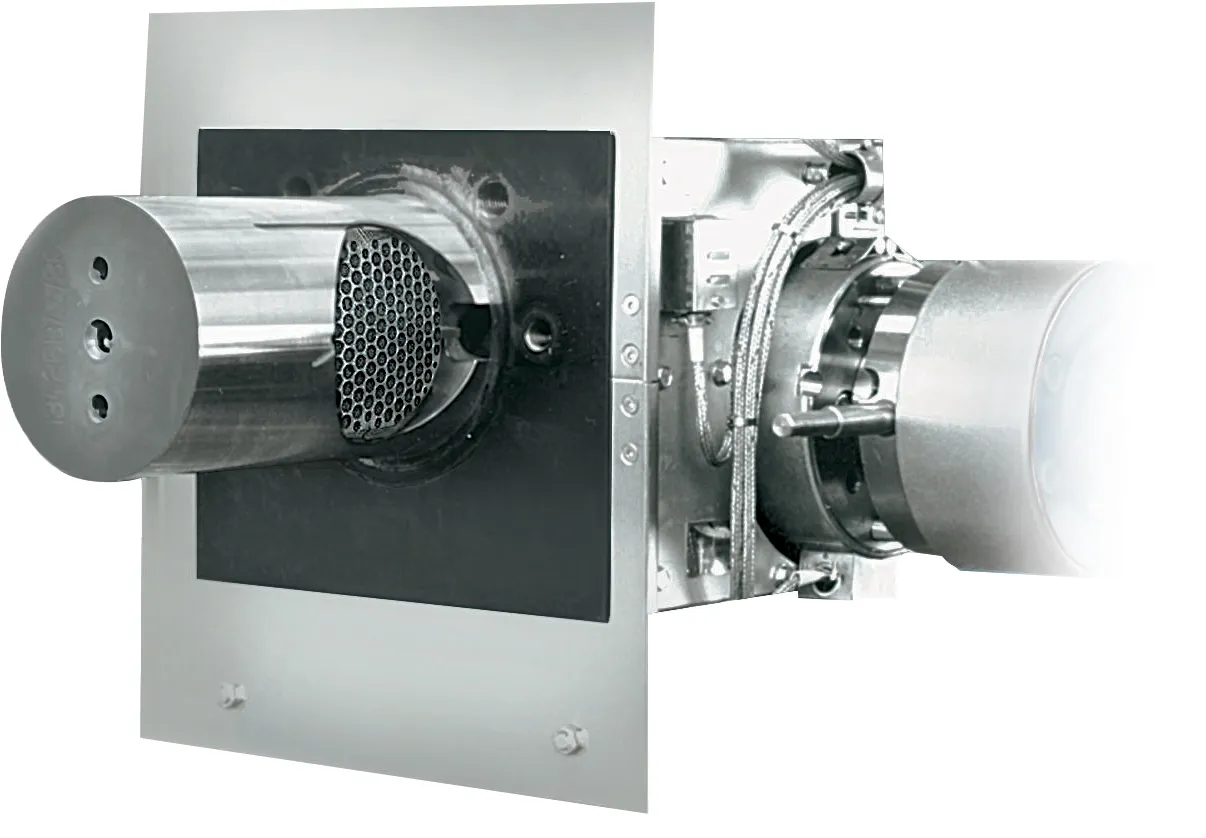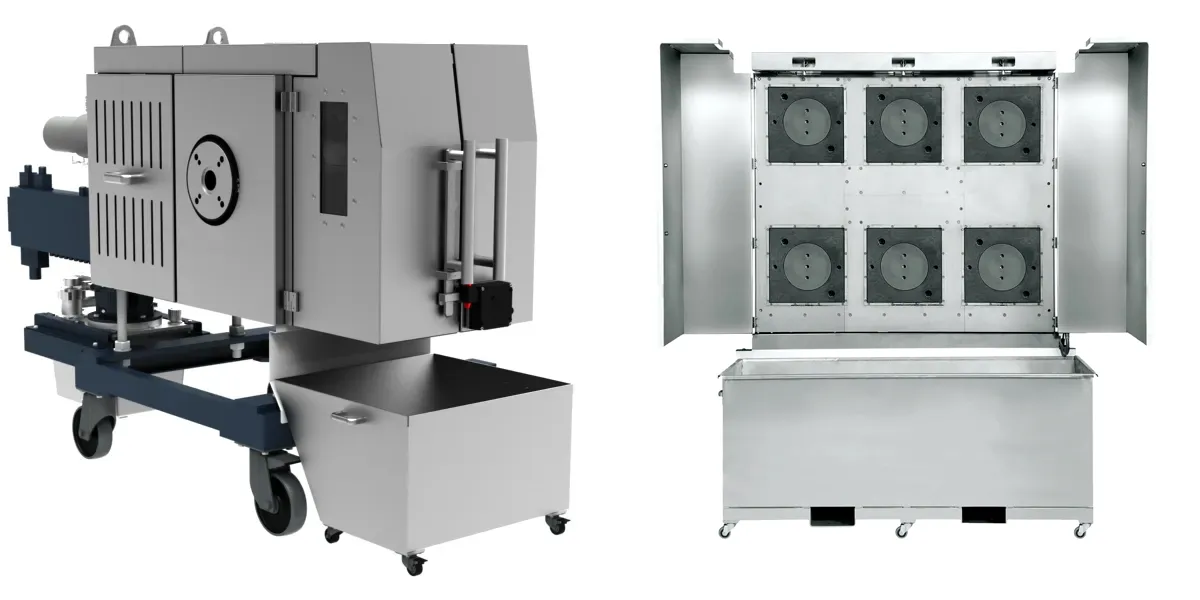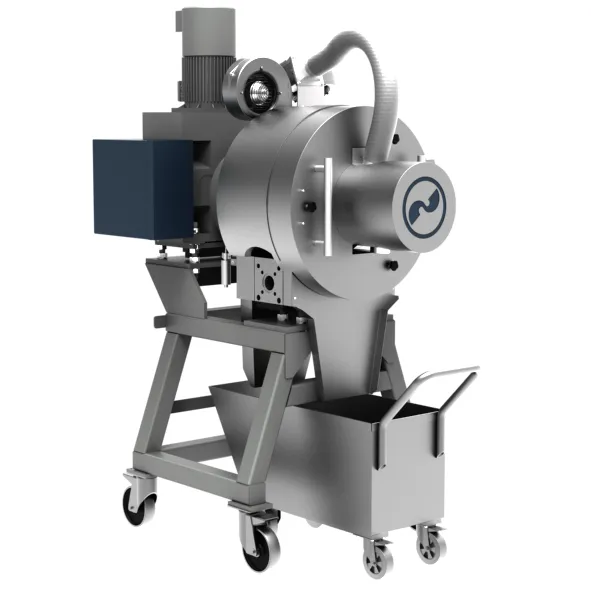Melt filtration in the plastic recycling process: overview of filter types
Melt filtration plays a crucial role in the plastic recycling process. It effectively removes impurities and contaminants to ensure the purity of the recycled pellets.
Different filters can be used. The choice depends on the materials to be processed. There are:
- Manual filters such as handheld lift filters and ratchet filters
- Direct flow filters
- Backflush filters
- Laser filters
- Band filters
- Candle filters
When choosing your filter, you need to pay attention to the following points:
- Which materials are being processed?
- Are the materials inhouse, post-consumer or post-industrial?
- Are the plastics contaminated?
- What is the level of contamination?
- What type of contamination is it?
- How will the recycled pellets be used?
In this article, we look at the different types of melt filtration, their areas of application, and their advantages and disadvantages.

Manual filters: handheld lift filter and ratchet filter
Suitable materials and level of contamination
This type of filter is used for melt filtration of very pure production waste and materials with up to 60% glass fiber content. They are ideal for contamination levels of up to 0.2%
The advantage of manual filters is their simplicity and cost efficiency. However, the machine needs to be stopped when the filters are changed.
Filter configuration
Manual lift filters and ratchet filters consist of mesh filters. These are round screens with different sizes of mesh.
Direct flow filters
Suitable materials and level of contamination
Direct flow filters enable continuous melt filtration of inhouse and post-industrial plastics with contamination levels of 0.1% to 0.6%.
Filter configuration
This type of filter typically consists of two hydraulic pistons. Each of these pistons has a mesh filter.
To monitor the pressure during melt filtration, there is a pressure sensor before and after the mesh filter. If these sensors detect an increase in pressure, the mesh filters need to be replaced. They can be replaced without stopping production.

Melt filtration with backflush filter
Suitable materials and level of contamination:
Backflush filters are suitable for the melt filtration of plastics with an impurity of 0.1% to 1%. These are particularly suited to processing inhouse, post-industrial and well-cleaned post-consumer materials.
Filter configuration
At the EREMA Group, for example, backflush filters consist of two pistons, each with two mesh filters. This enables continuous filtration. In addition, the mesh filters are cleaned by automatic back flushing. This extends their service life.
As with direct flow filters, there are pressure sensors before and after the filter. The cleaning process takes place as soon as the pressure within the filter increases.

Laser filter

Suitable materials and level of contamination
Laser filters are suitable for high levels of contamination of 5% to 6%. They are primarily used in the post-consumer recycling industry. This type of filter can also be used for the melt filtration of post-industrial materials such as irrigation hoses and pipes.
Configuration of EREMA Group filters
A laser filter consists of filter plates and a scraper star. The scraper is located in the center and ensures continuous cleaning so that the filter does not clog. With many types of laser filter, the entire system has to be shut down when the filter is replaced. Some types (such as the twin laser filter made by EREMA) also allow the filter to be replaced without stopping the machine. Please feel free to contact us for more information.
The laser filter does not use a laser for melt filtration. The name refers to the way the filter plates are made. The holes in the steel plates are laser cut. These are then installed in the filter.

Band filter
Suitable materials and level of contamination
Band filters are particularly suitable for removing mineral substances and coarser contaminants. They can be regarded as direct competition to laser filters.
Filter configuration
This filter consists of a band of mesh for melt filtration. When a section of the band becomes contaminated, it moves on until the next clean section is available for filtration. However, there is a risk of leakage due to the movement of the band.
Candle filter for melt filtration during recycling
Suitable materials and level of contamination
Candle filters are used for melt filtration when processing plastics in the form of fibers. It enables very fine filtration. This is particularly important for fiber-to-fiber recycling. For the processing of fibers, it is essential that they exhibit low levels of contamination.
Otherwise, the filters will clog. If this happens, the entire system needs to be stopped and cleaned.
Filter configuration
This filter consists of a cylinder with a candle-shaped cartridge inside, which is used for filtering. Compared to the screen plates on other types of filters, this filter has a larger filter surface area. As a result, it also takes longer until the filter is full and needs to be replaced.
Melt filtration in the plastic recycling process: What you need to know!
Melt filtration is a process that removes impurities and contaminants during the plastic recycling process. Different types of filters can be used for this process:
- Manual filters such as handheld lift filters and ratchet filters
- Direct flow filters
- Backflush filters
- Laser filters
- Band filters
- High-performance melt filters
- Candle filters
Each type of filter has specific areas of application and is characterized by different advantages and disadvantages. Which filter is the right one for your application depends on the materials to be processed and the degree of contamination. The table below provides an overview:
| Filters for melt filtration | Application | Advantages | Disadvantages |
| Manual filters | Very pure production waste and materials containing glass fibers | Cost-efficient | The system needs to be stopped to replace the filter. |
| Direct Flow Filters | Contamination of 0.1 to 0.6% | Continuous production, even when changing filters | Mesh filters must be replaced regularly |
| Backflush filters | Contamination of 0.1 to 1% | Continuous production and automatic cleaning of mesh filters through back flushing | High purchasing costs |
| Laser filters | Contamination levels of 5% to 6% | Long service life |
If the filters are used several times, a burn-out oven is required. This causes additional costs. |
| Band filters | Removal of mineral substances and heavy contaminants | Continuous production and automatic movement of the mesh band | Risk of leakage due to the movement of the band |
| Candle filters | Very fine filtration for fiber recycling | Long service life | If the fibers are highly contaminated, the filters quickly clog |
Do you still have questions about filters for melt filtration? Do not hesitate to contact us.